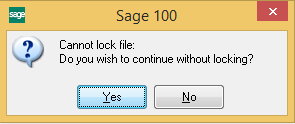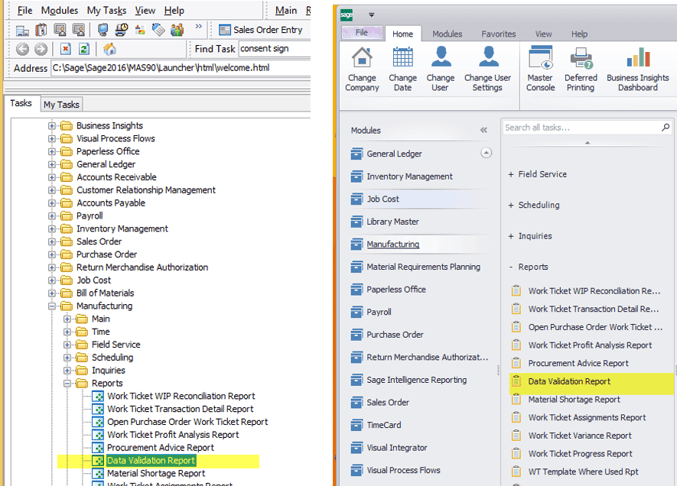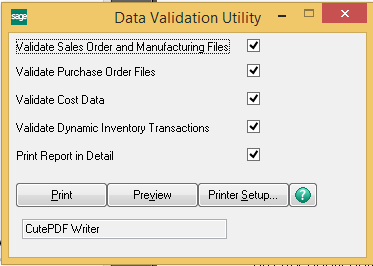Do you routinely run the Sage 100c Manufacturing, Data Validation Utility? Do you know what it does or how beneficial it can be to your organization?
As a rule of thumb, I recommend running the Sage 100c Manufacturing Data Validation Utility routinely; as part of your weekly housekeeping procedures. The utility checks for general data integrity issues and provides a listing of problems if they exist. It should also be run immediately after any hardware malfunctions or power outages to confirm there is no data corruption in Sales Orders or Purchase Orders related to Manufacturing.
To run the utility, from the Sage 100c Main Menu, select Manufacturing Module -> Report Menu -> Data Validation Report
The Utility expected all users to be out of the system so the data can be “locked”. When you run the report with users in the system, you will be warned that the file cannot be locked. You can still proceed with generating the report data.

You will then be prompted for data selection when running the report. There are four phases of data that will be scanned for issues. You also have an option to run the report in detail or summary format. Running with all the check boxes selected is generally recommended. When searching for something specific, you can clear an unnecessary phase.
- Sales Order and Manufacturing File Validation
- Purchase Order File Validation
- Cost Data
- Dynamic Inventory Transactions

Each record found on the Data Validation Report will include a Message Number or a Code that cross references to what the error represents. Errors encountered and printed on the error log should be corrected immediately as they are a representation of data integrity that has become corrupt. The built-in redundancy of the data may cause a single error to appear on the report multiple times, in different phases. Always repair Phase-1 Messages (100 Number range), first. When you finish repairing those messages you should close the report and generate the report data again. Often, repairing a Phase-1 Message will clear up errors in the following phases (200-400 number range).

If you are not familiar with Sage 100 data structures, system utilities or information outlined in the Technical Reference Guide, please contact your Sage 100c Manufacturing (JobOps) Consulting Group, the JobOps Support Team or RKL eSolutions for assistance in clearing issues and errors that appear on the report.
Click below to download the Sage 100c Technical Reference Guide.
Sage 100c Technical Reference Guide
Click below to subscribe and have this blog series sent straight to your inbox!
Subscribe to the Blog Series




